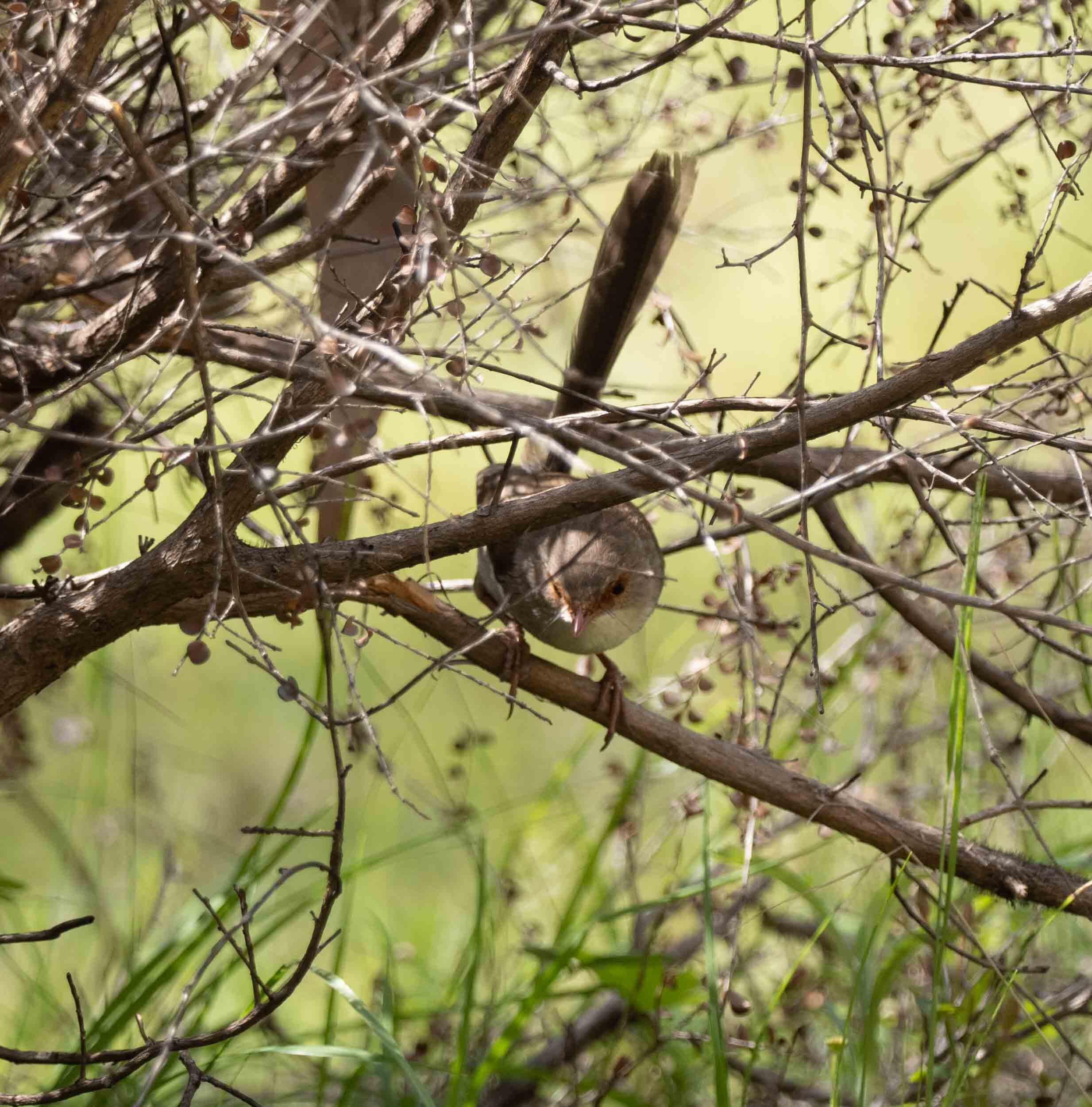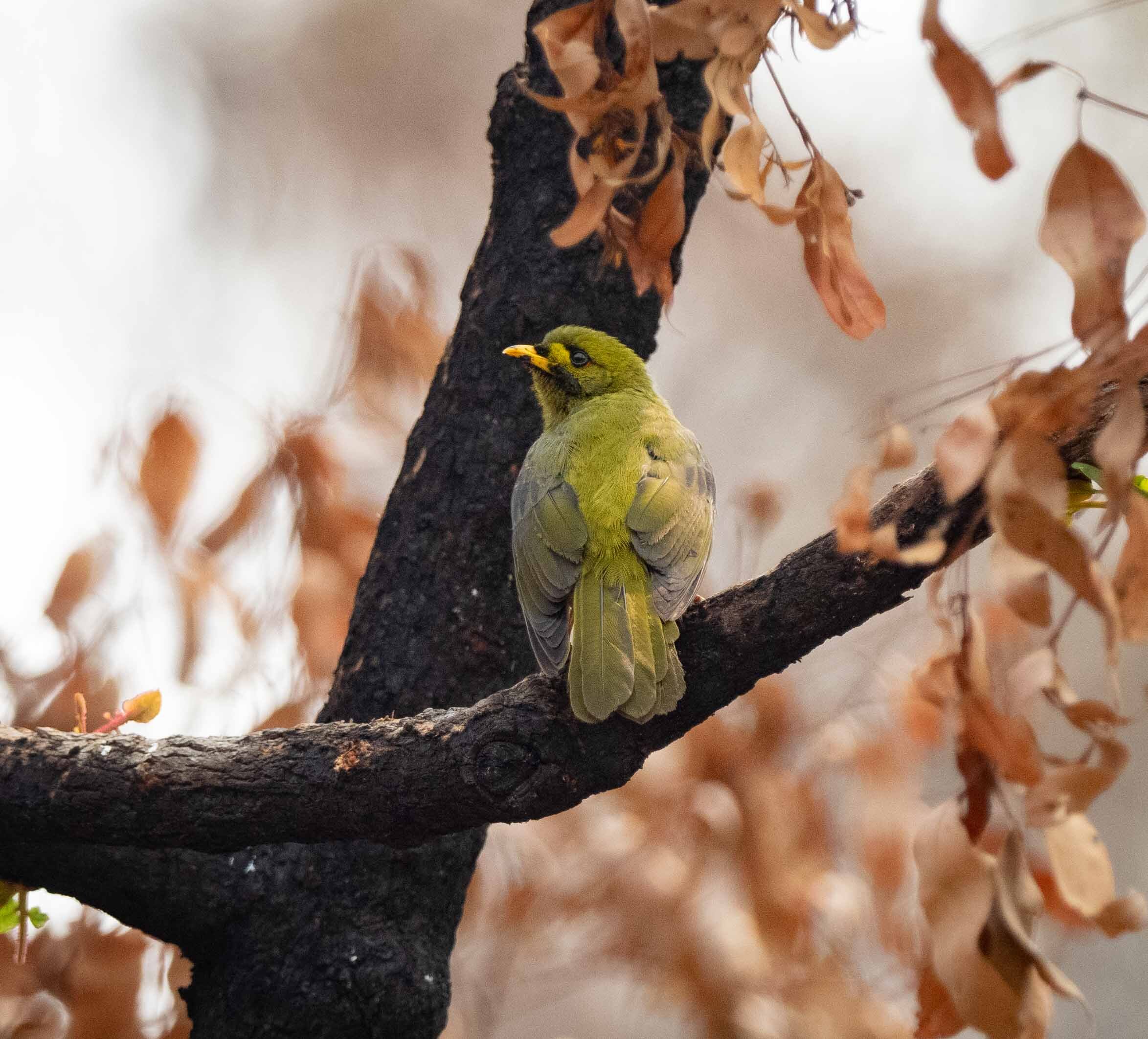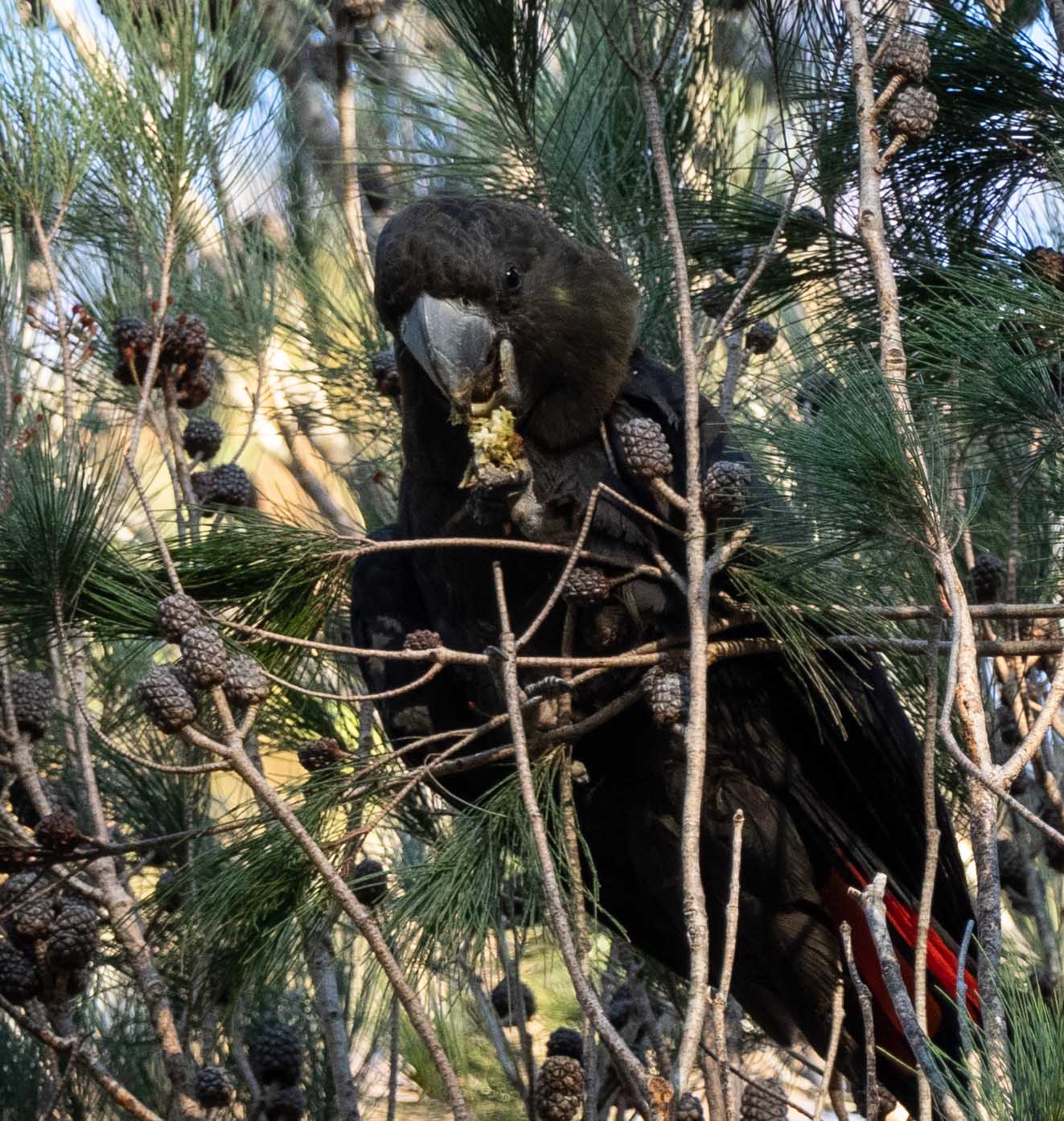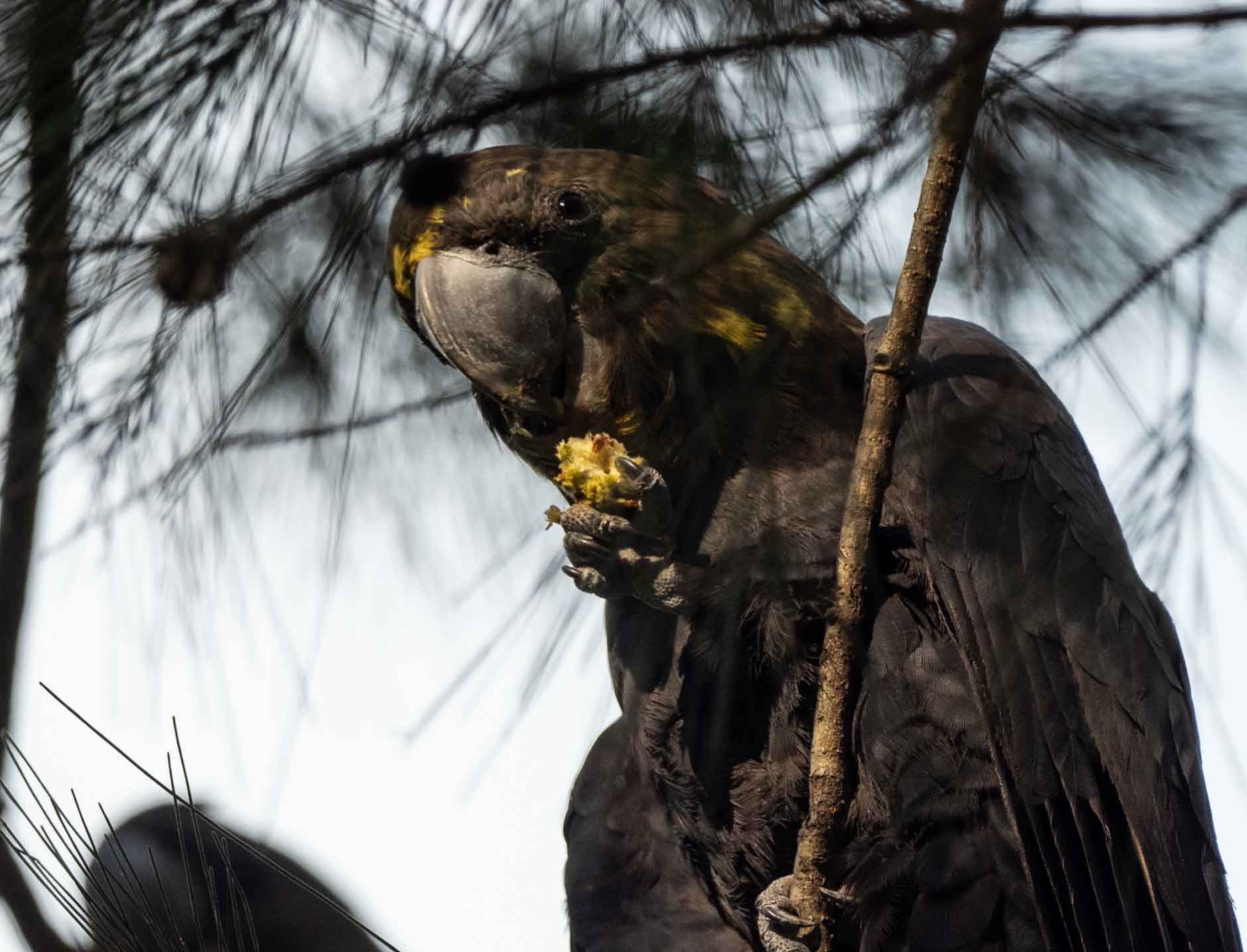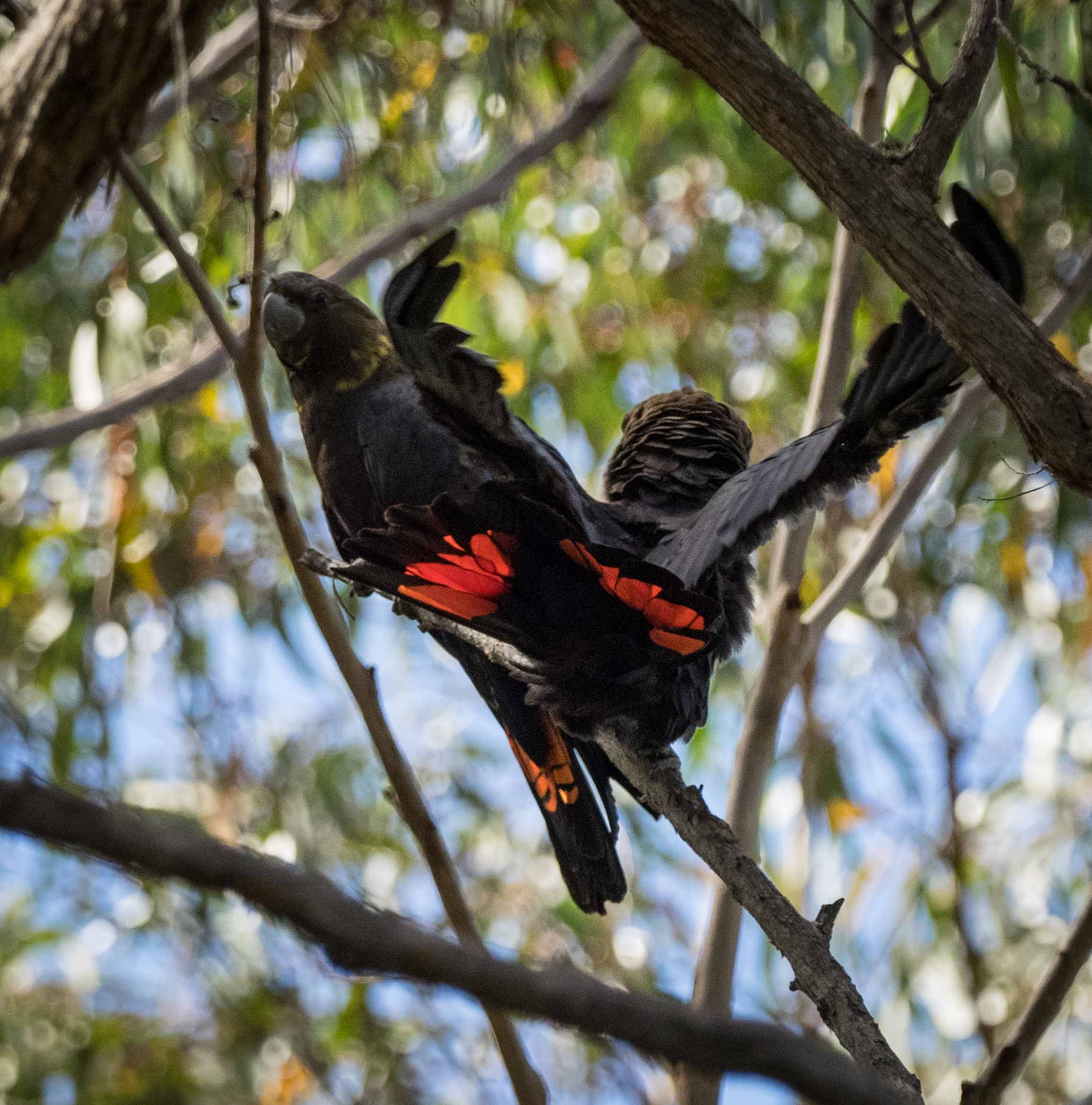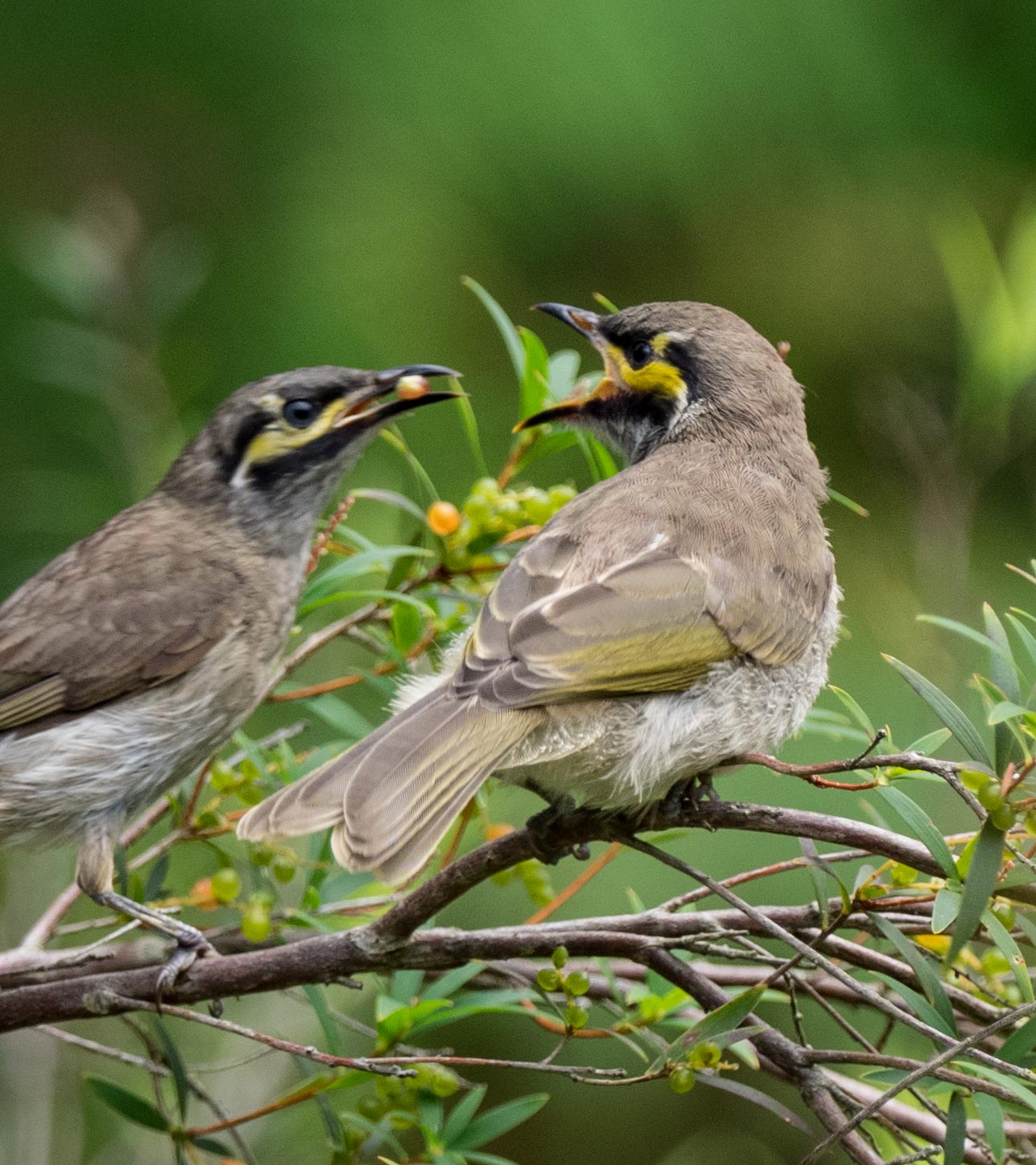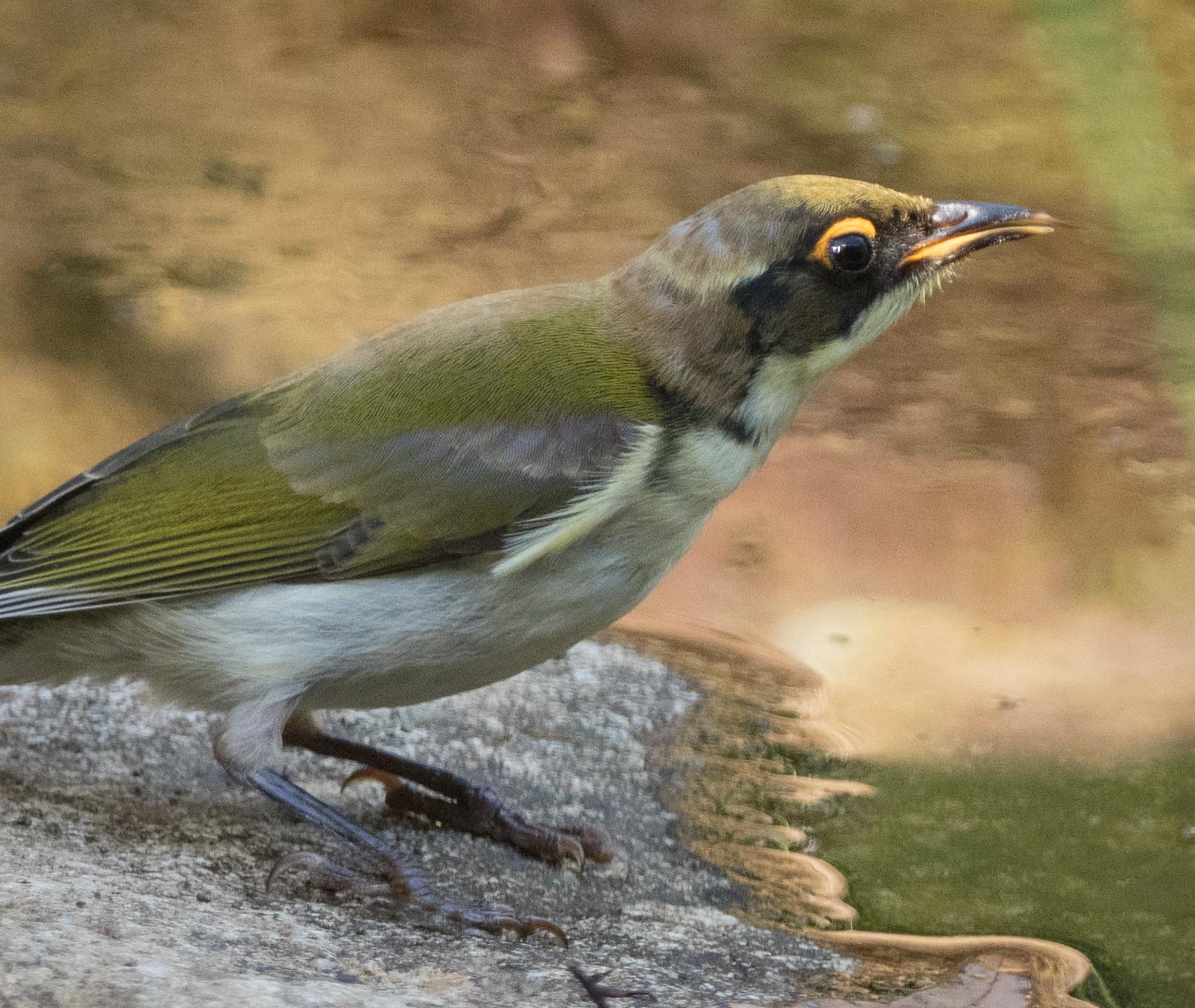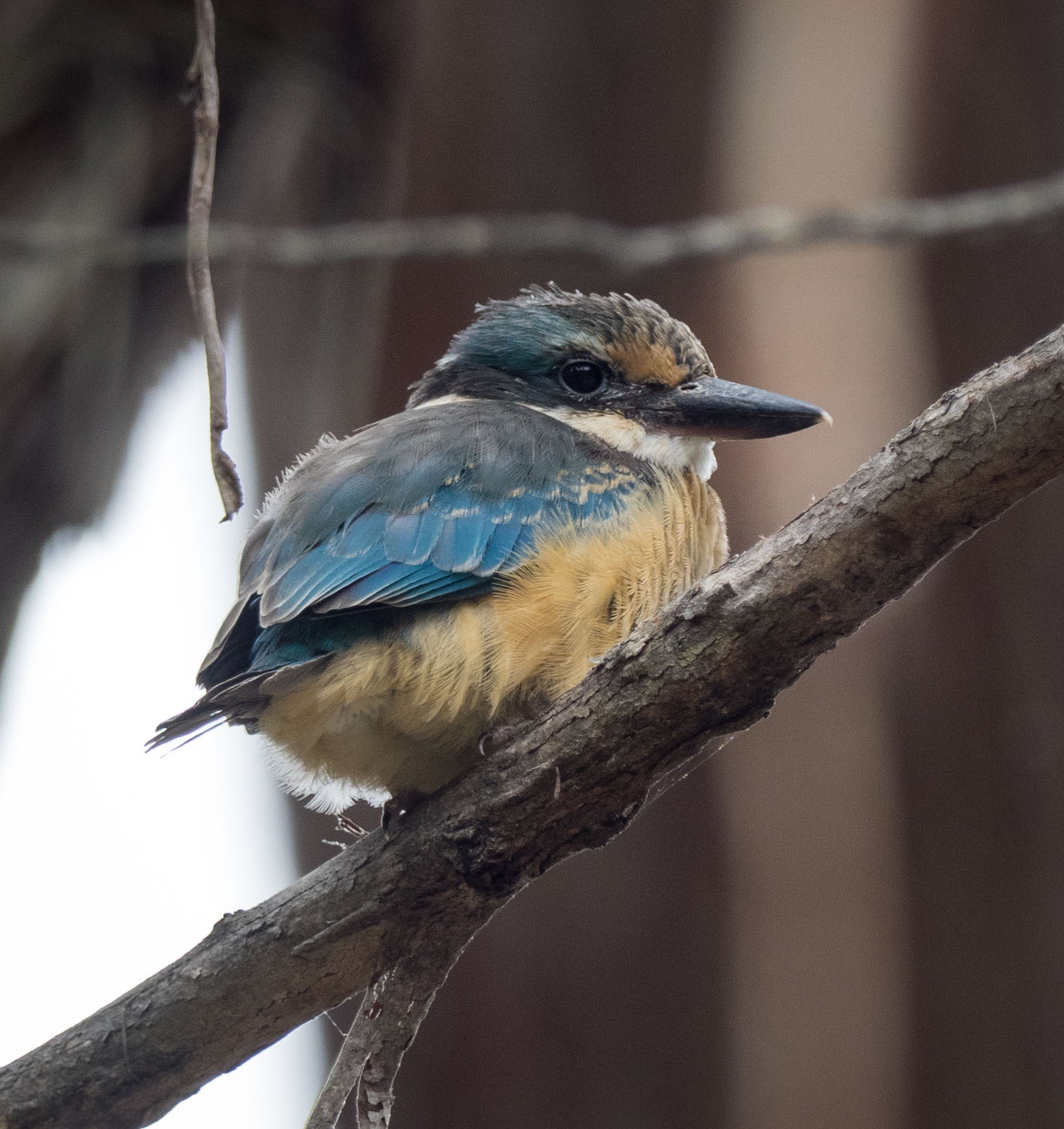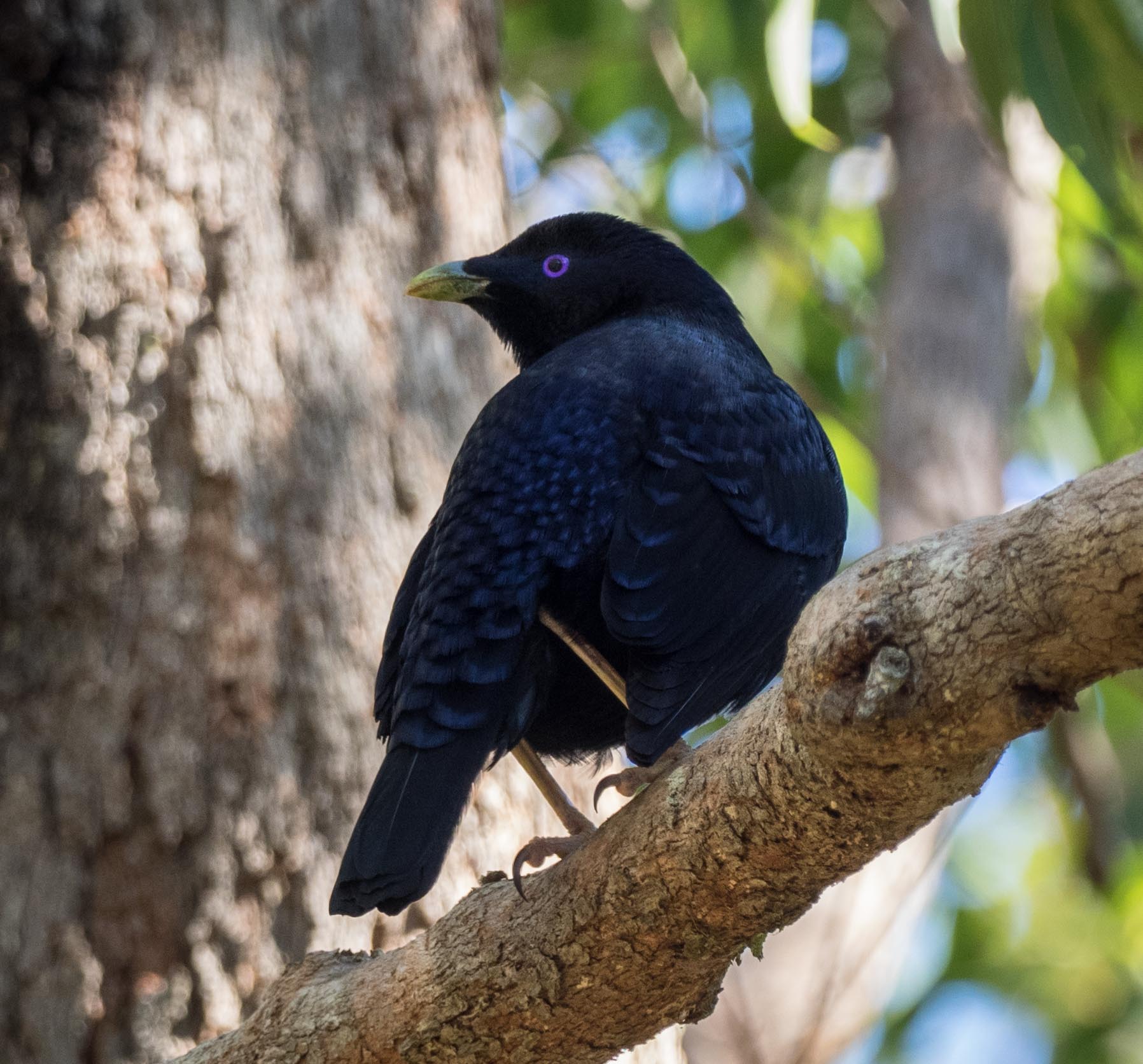Grey Fantails return amid a morning feeding frenzy
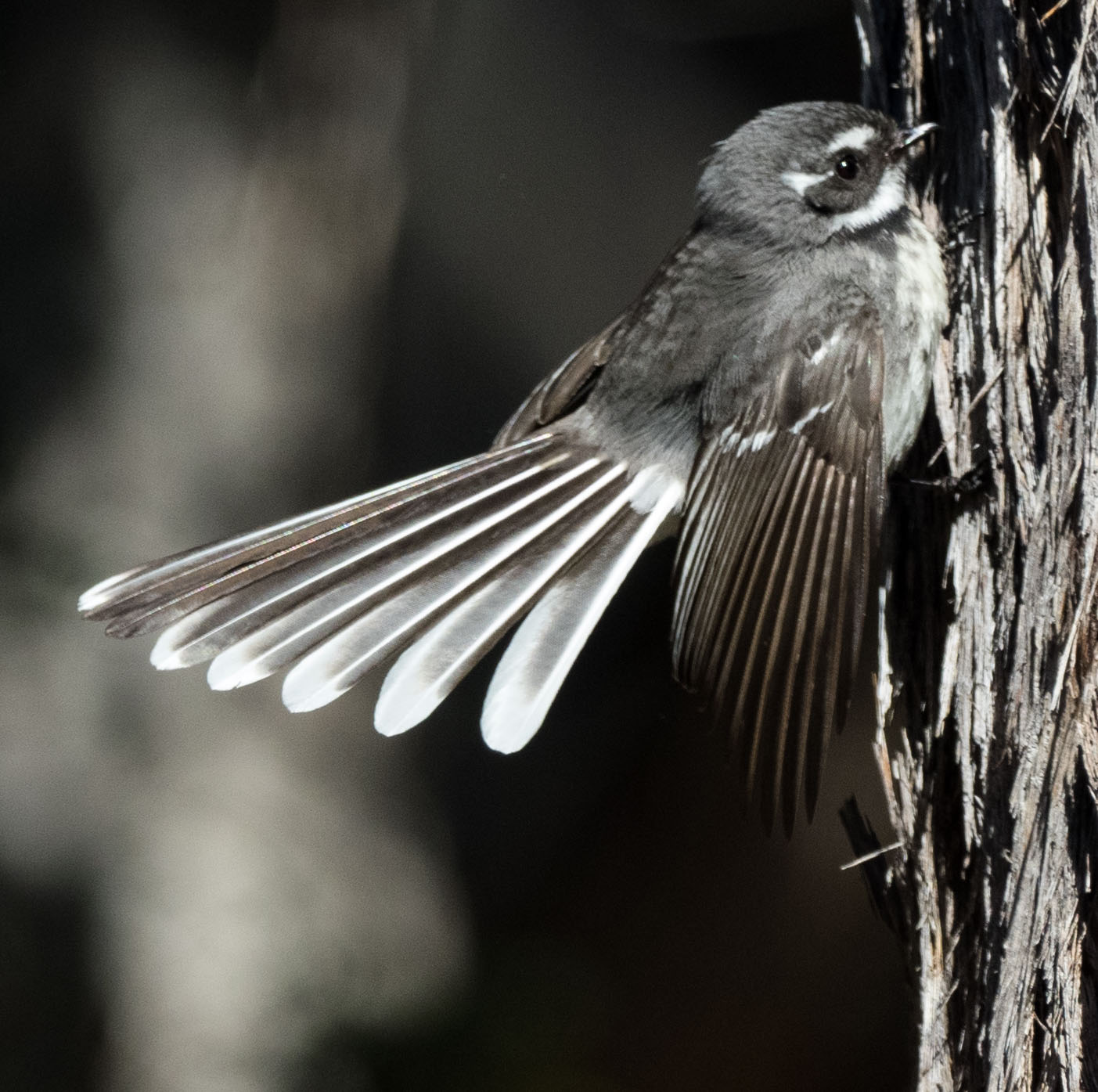
We have often wondered what small birds do to survive days like yesterday. It was cold, wet, and wildly windy.
Whatever else they do, it seems that they must fast. The morning after a day of wild weather the feeding frenzy is predictable and frenetic! Of course, the birds are not just hungry. They are also taking advantage of insects and other invertebrates emerging after rain.
The flurry of feeding activity this morning involved: Eastern Yellow Robins, Superb Fairy-wrens, Red-browed Finch, White-browed Scrubwrens, Grey Shrike-thrush, Bassian Thrush (all at or near ground level); Eastern Spinebills, Yellow-faced Honeyeaters and Brown Thornbills (in the shrub layer); Rose Robins, Crimson Rosellas, White-naped Honeyeaters and Spotted Pardalotes (higher up in the canopy).
But the stand-out bird of the day was the Grey Fantail.
Grey Fantail (Rhipidura albiscapa)
They are such a common sight for much of the year that we take their presence for granted, and almost stop noticing them. Until one day we realise that they've gone.
Grey Fantail numbers in the southern forests drop dramatically in late Autumn. It is known that populations in the south-east migrate north and west. The few birds we do see here in Winter are probably visiting from further south, perhaps even from Tasmania. There are usually just one or two, and we don't see them often.
So this morning was quite an event. At least eight birds suddenly appeared and their frenzied feeding continued for several hours. Grey Fantails can take insects in flight. The birds flutter and glide at all levels of the forest in pursuit of their prey. It was quite an aerial ballet, with so many fantails 'hawking' in the same area.
Grey Fantails also glean insects from leaves or tree trunks. They flare and fan their tails, and even extend their wings, no doubt startling cryptic moths into betraying their presence.
This bird's fanned tail helpfully shows the diagnostic feather patterning of the subspecies, Rhipidura albiscapa alisteri
It may be that the flock was just visiting on their way back south. Or they may stay, settle in, and breed. They do appear to belong to the our local subspecies, alisteri. The white markings on the tail distinguish the group that typically breed here on the mainland from the breeding populations of Tasmania and the Bass Straight islands, subspecies albiscapa.
Whether or not this particular flock stays around, we expect it will only be a few weeks before Grey Fantails are again a common sight feeding and breeding in the local forests.
The hunting strategy of the Eastern Yellow Robins is in stark contrast to the Grey Fantails' busy, fluttering and flipping style. Robins perch motionless, looking for movement on the ground, before pouncing and probing with their beaks. This makes them very photo-friendly! And they're such pretty birds I couldn't resist including this one shot.
Eastern Yellow Robin (Eopsaltria australis) - adult, feeding alongside Grey Fantails.





